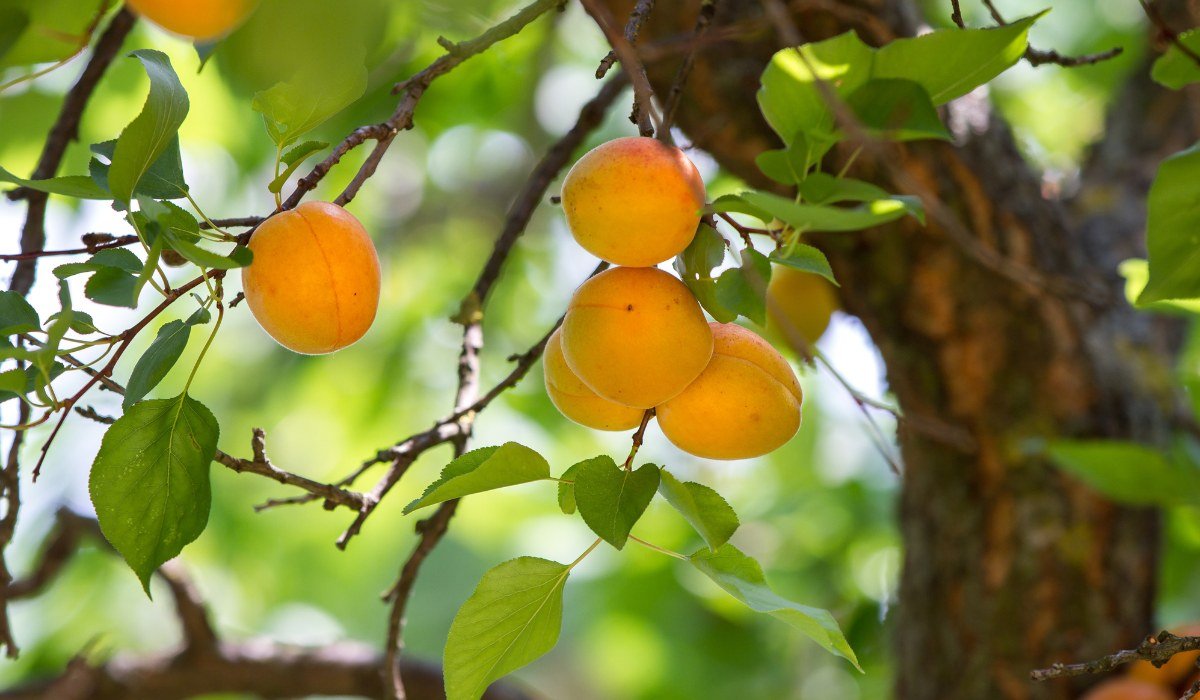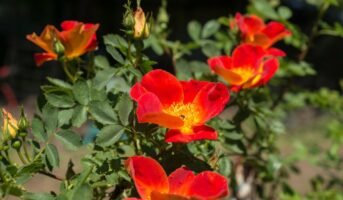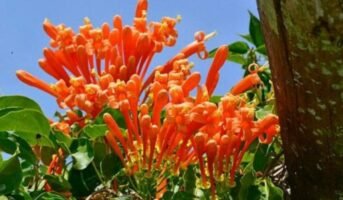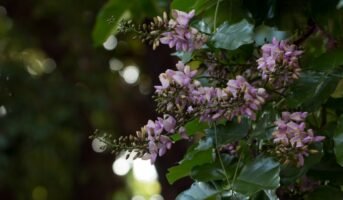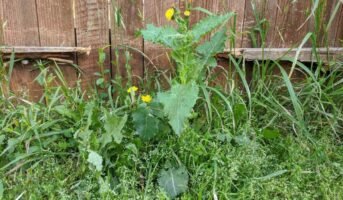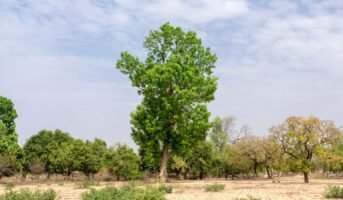The Prunus Armeniaca species of apricot is the one that is farmed the most frequently. Due to the widespread ancient cultivation, the natural range is not completely understood. According to the results of genetic investigations, the centre of origin is in Central Asia. It is widely farmed in many countries, and it has successfully made its way into the wild in many of those same nations.
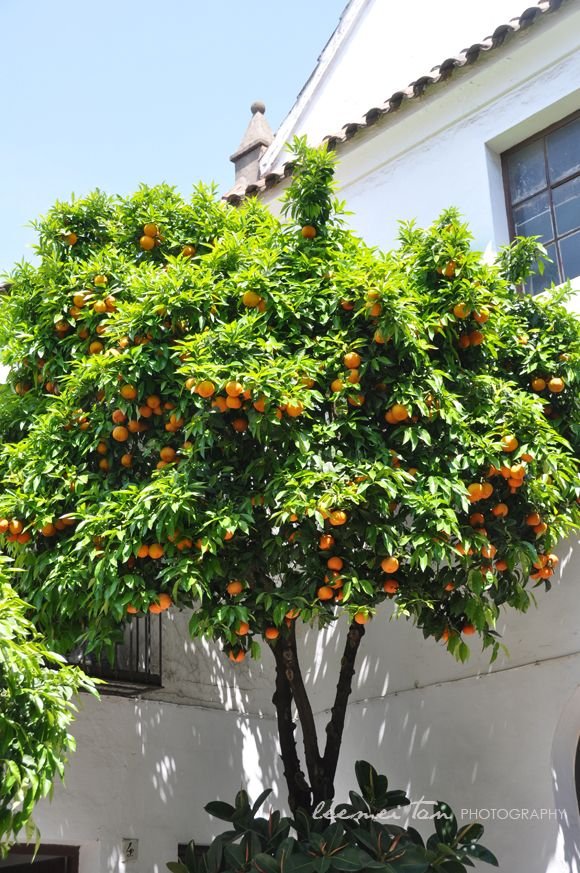
Source: Pinterest
Prunus Armeniaca: Key Facts
| Family | Rosaceae |
| Native Area | China |
| Sun Exposure | Full Sunlight |
| Soil pH | 5-6 |
| Maximum Height | 30 ft tall |
| Bloom time | Late April |
Learn about: Fig tree ficus carica
What are Prunus Armeniaca?
Prunus armeniaca is a small tree and commonly cultivated species of apricot of Prunus genus from the Rosaceae family. It is characterised by its ovate leaves, trunk up to 40 cm in diameter and a dense, spreading canopy. The tree is native to central Asia.
Prunus armeniaca: Features
- Prunus armeniaca is a tree that may grow to be between 8 and 12 metres (26 and 39 feet) tall and has a trunk that can reach a diameter of up to 40 centimetres (16 inches).
- The leaves are oval in shape, measuring between 5 and 9 centimetres (2.0 and 3.5 inches) in length and between 4 and 8 centimetres (1.6 and 3.1 inches) in width. They have a rounded base, a pointed tip, and a finely serrated border.
- The blooms have a diameter of between 0.8 and 1.8 inches (0.2 to 4.5 centimetres), and they have five petals that range in colour from white to a pinkish hue.
- They are produced individually or in pairs in the early spring, before the leaves.
- The fruit is a drupe that resembles a small peach and is between 1.5 and 2.5 centimetres (0.6 and 1.0 inches) in diameter (larger in some modern cultivars).
- Its colour ranges from yellow to orange and is frequently tinted red on the side that is most exposed to the sun.
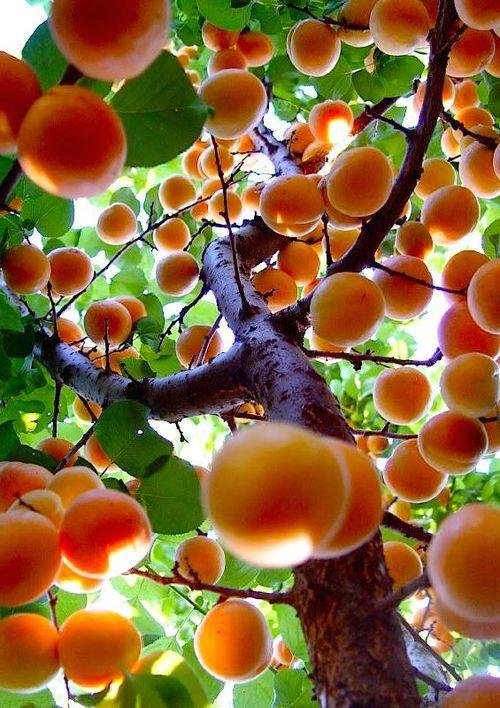
Source: Pinterest
Prunus Armeniaca: Types
- Prunus armeniaca var. ansu is a species of apricot native to East Asia with pink flowers.
- Common apricot found in China and Central Asia. It is widely farmed.
- Tibetan apricot, Prunus armeniaca var. holosericea; found in Qinghai, Shaanxi, and Sichuan in addition to Tibet.
- Meixianensis is a double-flowered apricot that is native to Mei County apricot.
- Prunus armeniaca var. xiongyueensis – Xiongyue apricot, Liaoning
- Prunus armeniaca var. zhidanensis — Zhidan apricot, Ningxia, Qinghai, Shaanxi, and Shanxi
Prunus Armeniaca: How to grow?
- You will need to prepare the planting hole. You will need to follow different recommendations based on the type of sapling you have purchased.
- Dig a hole twice as deep and as wide as the root ball.
- A ratio of two parts native soil to one part compost is ideal when backfilling with native soil and compost. Make sure your plant receives at least six to eight hours of sun every day, and make sure you water it thoroughly. With a pH of 6.0-7.0, the soil must be loose, rich, and well-draining
- When the ground is frozen, you do not need to water your apricots, but when everything thaws in the spring, water them again.
- If the soil is thawed during the first year of planting, keep it evenly moist by sticking your finger one inch below the surface every couple of days. This will measure soil moisture levels.
Prunus armeniaca: Maintenance tips
- Make sure that the apricot tree is placed in a spot that gets plenty of sunlight so that it may produce the most beautiful fruits and flowers possible.
- Apricot trees do best in soils that are rich in organic matter, have good drainage, and have a loamy texture.
- They do best in soil that is either slightly acidic or neutral, and it would be useful to evaluate the soil’s pH before planting to see whether or not any amendments are required.
- When the trees have reached their full size, they will require more water to ensure that the soil stays wet.
- The apricot tree does not fare well in dry conditions.
- In the warmer zones, providing supplemental watering will be necessary to promote the healthy production of blossoms and fruit.
- At least once each week, the soil is aerated around the tree and should be thoroughly soaked in water using a drip, sprinkler, or another type of watering method.
- Because apricots blossom so early in the spring, site selection is extremely important for frost protection.
- Avoid planting apricots in low regions and instead look for elevated areas with sufficient ventilation to plant them in.
- Your apricot trees should be fertilised in the early spring, before the start of new growth, and the fertiliser should be applied along the drip line of the tree. It is recommended that a fertiliser with a low nitrogen content be used on these trees.
Pests and diseases
In general, apricots are resistant to a number of the pests and illnesses that harm their close relatives, peaches and nectarines. Frost is the greatest obstacle to a successful apricot crop. Once the tree has established itself and its blossoms have survived the frost-free date in your zone, good orchard cleanliness, fertilisation, and watering may be the only extra care required.
Prunus Armeniaca: Harvesting apricots
If there is a suitable location for the apricot tree allowing its fruit production, it is time to harvest when the fruit displays a beautiful blush but still remains firm to the touch. Make sure to gently handle the fruits and remove from the tree with the stem intact.
Ripe apricots are ideally eaten fresh or cooked in different ways. They are better canned than frozen raw which toughens the fruit skin. Hence, if freezing is required, make sure to peel the fruit first.
Prunus Armeniaca: Uses and benefits
- Due to their incredible sweetness, the seeds or kernels of the apricot, which are cultivated in central Asia and around the Mediterranean, can be used in place of almonds.
- The oil that is obtained by pressing the kernels of these cultivars, which is referred to as the oil of almonds, has been utilised as a cooking oil.
- Fruit is eaten either raw, cooked, or dried for consumption at a later time. The best forms yield a texture that is tender and juicy, with a flavour that is deliciously rich. About 47.5 kg worth of fruit is produced annually by wild trees in the Himalayas.
- About 6.3% of the fruit of the wild type is composed of carbohydrates, 0.7% of it is protein, 2.5% of it is ash, and 2.5% of it is pectin.
- It contains around 10 milligrams of vitamin C per hundred grams of pulp.
- Bitter seeds should be eaten in very small quantities, whereas sweet seeds can be consumed as much as desired.
- In recipes that call for bitter almonds, such as those for marzipan and the like, the bitter seeds can be used instead.
- The trunk may be used to extract gum that is edible. The seed can contain as much as fifty percent of a semi-drying edible oil.
Medicinal uses
- The fruits of the apricot tree include citric and tartaric acid, as well as flavonoids and carotenoids. They are nourishing, purifying, and may also be used as a gentle laxative.
- In Vietnam, people utilise it medicinally to address conditions related to the digestive system and the respiratory system.
- The flowers have a tonic effect on women, increasing their chances of having children. Astringency can be found in the bark.
- In cases of poisoning brought on by eating bitter almond and apricot seeds, the inner bark and/or the root can be utilised to cure the condition.
- The effects of hydrogen cyanide can be mitigated by drinking a decoction made from the outer bark of the tree. In addition, the decoction can be used to calm skin disorders such as inflammation and irritation.
- Asthma, coughs, acute or chronic bronchitis, and constipation are some of the conditions that can be helped by using this.
- The seed is made up of a chemical known as “laetrile,” which has also been referred to as vitamin B17.
- It has been asserted that this can have a beneficial impact on the treatment of cancer; There does not appear to be a substantial deal of evidence to support this at the current time.
Prunus Armeniaca: Toxicity
Hydrogen cyanide can be found in kernels at levels ranging from 2.05% to 2.40%. However, the amount consumed in a regular diet is not enough to cause major damage.
FAQs
Where would you recommend putting down roots for an apricot tree?
It demands a full-sun environment.
Are the roots of apricot trees substantial?
The roots of apricot trees are rather shallow.
What is the growth rate of Prunus armeniaca?
More than 24 inches of height are added to his tree every year.
Housing News Desk is the news desk of leading online real estate portal, Housing.com. Housing News Desk focuses on a variety of topics such as real estate laws, taxes, current news, property trends, home loans, rentals, décor, green homes, home improvement, etc. The main objective of the news desk, is to cover the real estate sector from the perspective of providing information that is useful to the end-user.
Facebook: https://www.facebook.com/housing.com/
Twitter: https://twitter.com/Housing
Email: [email protected]
